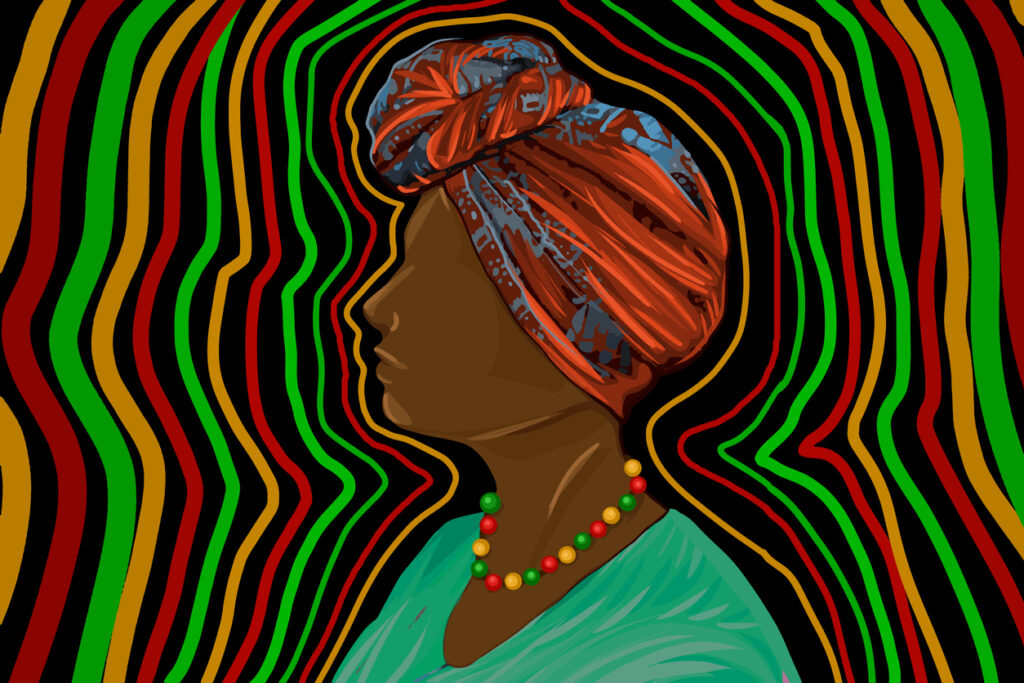In recent years, organisations around the world have been increasingly vocal about their commitment to building more inclusive and diverse workplaces. Many have implemented new policies, established training and resource groups, and hired senior staff to oversee and implement their DE&I strategies.
Tackling racism has never been more on the business agenda – at least, in theory. In practice, however, climbing the corporate ladder as a black woman is often an experience marked by racial biases, out-of-reach opportunities, and insufficient organisational support.
How it really is for black women at work
Black female employees face discrimination at every stage in their careers. Research found that 68% of black women have experienced racial bias at work, with that figure rising to 84% for those occupying senior management positions.
Black women are more likely to be overlooked for a promotion in comparison with their non-black female colleagues.
Inequalities are also present in terms of career progression, as black women are more likely to be overlooked for a promotion in comparison with their non-black female colleagues, whilst also being the least likely to benefit from the positive impact of career development and training in organisations, according to a recent McKinsey Women in the Work Place report.
Whilst they may have access to company-wide mentorship programmes, sponsorship opportunities – and the advocacy from senior members of staff that comes with these experiences – they can be few and far between. Is it any wonder, then, that Imposter syndrome is a common experience for many Black female professionals, as highlighted in this BBC article?
The lack of career development and promotion opportunities also affects a black woman’s ability to earn and be paid the same as their non-black colleagues. A recent study by the London School of Economics Inclusion Initiative found that Black women are statistically less likely to be in the top percentage of earners.
It’s unsurprising, then, that we are seeing such a reluctance from black talent to return to the office and many black professionals reassessing their career plans in the short term.
Action is needed
Whilst we have seen some progress in tackling the embedded microaggressions and biases present within the workplace, such as the introduction of the Hair Code in the UK to prevent discrimination based on hair style or texture which many companies have been quick to support, we have seen little change in the representation of Black talent at a senior level in over the last decade. If anything, the black glass ceiling appears more concrete than ever before.
Being accountable for your progress also means setting meaningful targets.
Unless business and HR leaders are willing to challenge the norms, embrace discomfort, and question their organisation’s purpose in promoting diverse talent, progress will falter.
So how can we, as HR professionals, offer an alternative to this reality and tackle the inequalities that restrict the progression and achievement of our black female talent?
Time to reassess your practices and progress
Analysing your organisation’s current processes and procedures is a good place to start. Conducting a root and branch review of all your people processes can highlight areas of improvement, with these insights being used to enact meaningful change and hold you accountable for the next step in your organisation’s diversity and inclusion journey. Being accountable for your progress also means setting meaningful targets.
Be intentional in your recruitment strategies to ensure a diversity of talent and active promotion of the inclusion and advancement of black women in your organisation.
There is a saying that ‘you measure what you treasure’, so establishing stretching – though realistic – targets will turn these intentions into action and incentivise managers to act. Each year, review your performance and progress towards these goals and identify and learn from your mistakes, implementing solutions to rectify them. Share your wins, learnings, and insights with all stakeholders – especially your black women leaders.
Make your recruitment strategies proactive
Be intentional in your recruitment strategies to ensure a diversity of talent and active promotion of the inclusion and advancement of Black women in your organisation. When hiring, be explicit about seeing diverse shortlists and be proactive about hiring black talent at all levels of your business. There are various black talent networks and programmes that you can partner with to reach potential candidates, so there’s no excuse not to act.
Make it imperative to accelerate the development of the black woman in your organisation.
You should also avoid asking about current pay in interviews as this can reaffirm existing pay inequalities, and be transparent with how career progression works in your organisation so that your black female employees understand the steps to their next promotion early on in their career.
Shout about your black female talent
In addition to being willing to hire externally at the top of your organisation and into critical decision-making roles, make it imperative to accelerate the development of the black woman in your organisation. Nominate her for external leadership programmes and for internal, high-profile projects, and offer development opportunities through sponsorship.
Addressing inequalities within the workplace relies on both L&D and HR professionals.
When a black woman is sponsored by a significantly more senior individual in her organisation, she is more likely to attain that promotion faster, be seconded to those career-defining and enhancing projects and be invited to the key decision-making meetings, all of which will count in her favour when the opportunities for promotion come.
These changes can be taken to advance black talent currently in the workplace and, if followed with genuine intent and commitment, will go some way towards ensuring the talent bench of the next generation of black leaders is strong.
The time for talking has passed
Addressing inequalities within the workplace relies on both L&D and HR professionals, business leaders and organisations putting into place actionable ways to empower more black women to reach the top and tackle the racism they experience when they get there. Go beyond simply listening to the lived experiences of your Black female employees to proactively asking what, how and when critical changes can be made – and actioning them.
Now the time to turn a corner and start driving meaningful, long-lasting change.
L&D and HR together are the most critical and influential functions in the organisation, so step into this power and leverage your influence with the C-suite to drive real change for the benefit of all employees.
This year’s theme for Black History Month was ‘actions, not words’, so now is the time to turn a corner and start driving meaningful, long-lasting change that we ALL can be proud of going forward. Together we can enact change to build a better, more inclusive world – all we have to do is take that first decisive step.
Interested in this topic? Read How can L&D develop more black women into leaders?
In recent years, organisations around the world have been increasingly vocal about their commitment to building more inclusive and diverse workplaces. Many have implemented new policies, established training and resource groups, and hired senior staff to oversee and implement their DE&I strategies.
Tackling racism has never been more on the business agenda - at least, in theory. In practice, however, climbing the corporate ladder as a black woman is often an experience marked by racial biases, out-of-reach opportunities, and insufficient organisational support.
How it really is for black women at work
Black female employees face discrimination at every stage in their careers. Research found that 68% of black women have experienced racial bias at work, with that figure rising to 84% for those occupying senior management positions.
Black women are more likely to be overlooked for a promotion in comparison with their non-black female colleagues.
Inequalities are also present in terms of career progression, as black women are more likely to be overlooked for a promotion in comparison with their non-black female colleagues, whilst also being the least likely to benefit from the positive impact of career development and training in organisations, according to a recent McKinsey Women in the Work Place report.
Whilst they may have access to company-wide mentorship programmes, sponsorship opportunities – and the advocacy from senior members of staff that comes with these experiences – they can be few and far between. Is it any wonder, then, that Imposter syndrome is a common experience for many Black female professionals, as highlighted in this BBC article?
The lack of career development and promotion opportunities also affects a black woman’s ability to earn and be paid the same as their non-black colleagues. A recent study by the London School of Economics Inclusion Initiative found that Black women are statistically less likely to be in the top percentage of earners.
It’s unsurprising, then, that we are seeing such a reluctance from black talent to return to the office and many black professionals reassessing their career plans in the short term.
Action is needed
Whilst we have seen some progress in tackling the embedded microaggressions and biases present within the workplace, such as the introduction of the Hair Code in the UK to prevent discrimination based on hair style or texture which many companies have been quick to support, we have seen little change in the representation of Black talent at a senior level in over the last decade. If anything, the black glass ceiling appears more concrete than ever before.
Being accountable for your progress also means setting meaningful targets.
Unless business and HR leaders are willing to challenge the norms, embrace discomfort, and question their organisation’s purpose in promoting diverse talent, progress will falter.
So how can we, as HR professionals, offer an alternative to this reality and tackle the inequalities that restrict the progression and achievement of our black female talent?
Time to reassess your practices and progress
Analysing your organisation’s current processes and procedures is a good place to start. Conducting a root and branch review of all your people processes can highlight areas of improvement, with these insights being used to enact meaningful change and hold you accountable for the next step in your organisation’s diversity and inclusion journey. Being accountable for your progress also means setting meaningful targets.
Be intentional in your recruitment strategies to ensure a diversity of talent and active promotion of the inclusion and advancement of black women in your organisation.
There is a saying that ‘you measure what you treasure’, so establishing stretching – though realistic – targets will turn these intentions into action and incentivise managers to act. Each year, review your performance and progress towards these goals and identify and learn from your mistakes, implementing solutions to rectify them. Share your wins, learnings, and insights with all stakeholders – especially your black women leaders.
Make your recruitment strategies proactive
Be intentional in your recruitment strategies to ensure a diversity of talent and active promotion of the inclusion and advancement of Black women in your organisation. When hiring, be explicit about seeing diverse shortlists and be proactive about hiring black talent at all levels of your business. There are various black talent networks and programmes that you can partner with to reach potential candidates, so there’s no excuse not to act.
Make it imperative to accelerate the development of the black woman in your organisation.
You should also avoid asking about current pay in interviews as this can reaffirm existing pay inequalities, and be transparent with how career progression works in your organisation so that your black female employees understand the steps to their next promotion early on in their career.
Shout about your black female talent
In addition to being willing to hire externally at the top of your organisation and into critical decision-making roles, make it imperative to accelerate the development of the black woman in your organisation. Nominate her for external leadership programmes and for internal, high-profile projects, and offer development opportunities through sponsorship.
Addressing inequalities within the workplace relies on both L&D and HR professionals.
When a black woman is sponsored by a significantly more senior individual in her organisation, she is more likely to attain that promotion faster, be seconded to those career-defining and enhancing projects and be invited to the key decision-making meetings, all of which will count in her favour when the opportunities for promotion come.
These changes can be taken to advance black talent currently in the workplace and, if followed with genuine intent and commitment, will go some way towards ensuring the talent bench of the next generation of black leaders is strong.
The time for talking has passed
Addressing inequalities within the workplace relies on both L&D and HR professionals, business leaders and organisations putting into place actionable ways to empower more black women to reach the top and tackle the racism they experience when they get there. Go beyond simply listening to the lived experiences of your Black female employees to proactively asking what, how and when critical changes can be made – and actioning them.
Now the time to turn a corner and start driving meaningful, long-lasting change.
L&D and HR together are the most critical and influential functions in the organisation, so step into this power and leverage your influence with the C-suite to drive real change for the benefit of all employees.
This year’s theme for Black History Month was ‘actions, not words’, so now is the time to turn a corner and start driving meaningful, long-lasting change that we ALL can be proud of going forward. Together we can enact change to build a better, more inclusive world – all we have to do is take that first decisive step.
Interested in this topic? Read How can L&D develop more black women into leaders?





